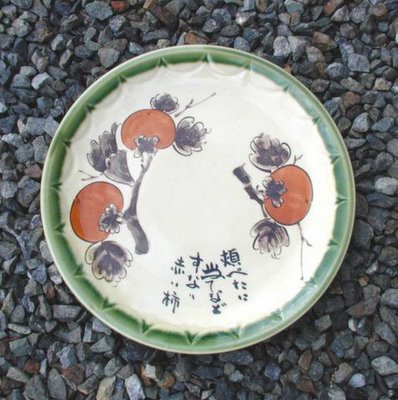::::::::::::::::::::::::::::::::::::::::::::::::::::::::::::::::::::::::::::::::::::::::::::::::::::
Potato (jagaimo)
***** Location: Japan
***** Season: Various, see below
***** Category: Plant / Humanity
*****************************
Explanation
kigo for mid-summer
jagaimo no hana 馬鈴薯の花 (じゃがいものはな)
blossoms of the potato plant
jagatara no hana じゃがたらの花(じゃがたらのはな)
bareisho no hana馬鈴薯の花(ばれいしょのはな)
Kartoffelblüten, jaga-imo no hana
kigo for early autumn

potato, potatoes 馬鈴薯 (じゃがいも) jaga imo, jagaimo, jaga-imo
... jagaimo じゃがいも、
jagatara imo じゃがたらいも "potatoes from Jakarta"
hasshoo imo 八升芋(はっしょういも)
bareisho 馬鈴薯(ばれいしょ)
:::::::::::::::::::::::::::::::::::::::::::::::::::::::::::::::::::::::::::::::::::::::::::::::::::::
the following are NOT kigo
from Hokkaido
Danshaku, danshaku imo, May Queen. Kitaakari, Waseshiro, Matilda, Tooya, Cynthia.
Baron Danshaku Kawada Ryuukichi (1856-1951) introduced European potatoes to Hokkaido and helped breed a variety that yielded more than the old Japanese ones. Thus he helped the farmers survive the harsh climate of Hokkaido.
They were known in Kyushu as "oranda imo" potatoes from Holland.
The name comes from the harbour of .. Jakarta ... jagatara ... jagaimo.
However, the situation has begun to change recently. Varieties called Cynthia, Chérie and Inka-no Mezame (or Inca's awakening, a seed potato from the Andes) are among the newcomers whose output has been increasing rapidly over the past several years.
New varieties of potatoes
shinjaga 新じゃが new potatoes
in spring. They can be eaten with the skin after scrubbing carefully.
neue Kartoffeln
jagabataa ジャガバター potatoes with butter
jagaimo amanattoo じゃがいも甘納豆 potatoes pickled in sugar
sugar-glazed potatoes
from Otaru 糖漬け
. . . CLICK here for Photos !
:::::::::::::::::::::::::::::::::::::::::::::::::::::::::::::::::::::::::::::::::::::::::::::::::::::
Food with potatoes じゃがいも料理 jagaimo ryoori
. . . CLICK here for Photos !
fukinko dango ふきんこ団子 potato balls, wrapped in a cloth
... imo dango 芋だんご
nikujaga 肉じゃが potatoes with meat
Unweit von Hiroshima liegt die Hafenstadt Kure 呉, ein wichtiger Stützpunkt der japanischen Kriegsmarine. Der Admiral Toogoo Heihachiroo (1847-1934) lernte bei seinen Fahrten in Europa ein Gericht kennen, das er seinen Soldaten auf dem Schiff unterwegs zu Essen gab und das von Kure aus ganz Japan eroberte – die inzwischen so beliebte Hausmannskost "Kartoffeln mit Fleisch" (nikujaga). In Kure werden dazu nur Kartoffeln der Sorte May Queen, Rindfleischscheiben, Shirataki-Konnyaku-Fadennudeln und Zwiebeln zusammen ohne Wasser eingekocht. In anderen Gegenden kommen nach Geschmack noch Möhren und Erbsen dazu.
Die Stadt Kure bemüht sich mit diesem und anderen Gerichten, die auf Schiffen der Kriegsmarine gegessen werden, einen „Marine-Gourmet“ (kaigun gurume) aufzubauen und viele Restaurants in Kure servieren inzwischen diese Gerichte für die Touristen.
:::::::::::::::::::::::::::::::::::::::::::::::::::::::::::::::::::::::::::::::::::::::::::::::::::::

yudejaga ni shiokara ゆでじゃがに塩辛
jaga shiokara じゃが塩辛
boiled potatoes with some fish guts pickled in salt
This was quite a speciality for the landlocked farmers of Hokkaido in the times before the refrigerator.
*****************************
Worldwide use
Kenya
. Irish Potatoes
*****************************
Things found on the way

Mr. Potato Head
German Potato Doritos ドリトス・ジャーマンポテト snack with flavor of German Potatos
. . . CLICK here for Photos !
Reference : German Potatos, Japan
:::::::::::::::::::::::::::::::::::::::::::::::::::::::::::::::::::::::::::::::::::::::::::::::::::::
Heißgeliebte Kartoffel
Die Kartoffeln kamen vor etwa 400 Jahren mit den europäischen Händlern und Missionaren über Jakarta nach Japan. Jakaruta ... jagatara ... jaga ... diesen lautmalerischen Namen haben sie noch heute.
Die „Holländische Kartoffel“ (orandaimo) wird in Dokumenten aus dem Jahre 1857 von Shimazu Nariakira erstmals belegt, der beschreibt, dass die amerikanischen Kriegsschiffe diese Kartoffeln mit nach Okinawa (damals noch Ryuukyuu) gebracht hatten. Die „Holländische Kartoffel“ wird auch im Gegensatz zur Süßkartoffel „Gelbe Kartoffel“ genannt. Sie enthält einen geringeren Wasseranteil und ist gut aufzuheben. Ein Fischer aus Itoman brachte einige Knollen in seine Heimat, dort werden sie daher „Itoman-Kartoffeln“ genannt. Im Gegensatz zu den in Satsuma bekannten Süßkartoffeln wurden die neuen Arten auch als „Salat-Kartoffeln“ bezeichnet.
Etwa 100 Jahre später fand die Kartoffeln von Nagasaki aus ihren Weg nach Hokkaido. Erste Dokumente aus Setana, einer Stadt im Südwesten Hokkaidos, berichten im Jahre 1706 vom Anbau der Kartoffeln. Nach der Meiji-Restauration begann dann der Anbau auf Großflächen. Die erste Sorte war „Danshaku imo“, wörtlich „Kartoffeln des Barons“, die von Baron Kawada Ryuukichi (1856-1951) von Hakodate im Jahre 1908 aus England eingeführt wurden. Danshaku-Kartoffeln eignen sich mehr für Kartoffelbrei, während die zweithäufigste Sorte, May Queen, eher im Eintopf und als gekochte Kartoffel auf den Tisch kommt.
Während der Meiji-Zeit breitete sich die Kartoffel in ganz Japan aus und Kartoffelgerichte wurden auch als Mahlzeiten in den Schulen gereicht. In den Kriegsjahren gab es mittags oft nur entweder eine Süßkartoffel oder zwei gekochte Kartoffeln und etwas Tee.
Seit einigen Jahren wird in Japan auch mit dem Anbau anderer Sorten experimentiert, selbst Kartoffel mit bunten Farben sind gefragt, weil sie etwas Farbe auf den Esstisch bringen. Insbesondere „Cynthia“, eine eiförmige Kartoffel mit zarter Haut, die beim Kochen recht gut den Geschmack von Würzsaucen annimmt und nicht so schnell zerfällt, hat das Gefallen der japanischen Hausfrauen gefunden.
Inzwischen ist Hokkaido die Präfektur mit dem größten Kartoffelanbau Japans.
In Otaru werden Kartoffeln sogar in Zucker glasiert und als Süßigkeit angeboten!
Und Kartoffelchips mit Schokoladenüberzug werden auch nicht verschmäht.
Japanischer Kartoffelsalat enthält keinen Essig, sondern Mayonnaise und ein gekochtes Ei, er ist daher wesentlich sähmiger. Er ist keine eigenstängige Mahlzeit sondern nur eine Beilage zum Reis. Viele japanische Bento-Lunchpakete enthalten etwas Kartoffelsalat in einem Eck, auch Sandwiches werden mit Kartoffelsalat bestrichen, der allerdings eher einem Kartoffelbrei mit Gemüsebeilagen ähnelt.
Als Snack stehen die Kartoffelchips an erster Stelle der Wunschliste bei Kindern und Erwachsenen und im Familienrestaurant sind die Pommes nicht wegzudenken. Abends zum Bier im Izakaya stehen die „Deutschen Kartoffeln“ auf dem Speisezettel, jaaman poteto, German Potato in japanischer Aussprache, oder einfach nur die „Kartoffeln mit Butter“ und etwas Soyasauce, wenn es beliebt.
*****************************
HAIKU and SENRYU
万有引力あり馬鈴薯にくぼみあり
banyuu inryoku ari bareisho ni kubomi ari
there is gravitation in the universe
there are dents in potatoes
Okusaka Maya 奥坂まや
:::::::::::::::::::::::::::::::::::::::::::::::::::::::::::::::::::::::::::::::::::::::::::::::::::
this potato
winks as i pick it up
for peeling
that kind of night--
before i cook & eat
painting potatoes
Kris Kondo
Japan, November 2010
*****************************
Related words
Sato-imo 里芋 Taro potato
. Sweet potatoe (satsuma imo 薩摩芋)
. Daruma as a potato ... of all kinds .
***** WASHOKU :
YASAI . Vegetable SAIJIKI
:::::::::::::::::::::::::::::::::::::::::::::::::::::::::::::::::::::::::::::::::::::::::::::::::::










































